13 Best Software Engineering Books To Read In 2023

Are you a software engineer looking to enhance your expertise through insightful literature? Are you looking to skyrocket your skills and stand out from the crowd?
As software engineers, we always strive to keep our heads above the water and learn the latest tech stack. But what if I told you that returning to the basics could be your best bet to upgrade your software development career?
Whether you are just beginning your journey or are a seasoned professional, understanding the core principles detailed in these books can aid in honing your skills and advancing your career. These handpicked software engineering books guide you in making informed design choices, understanding complex codes, and navigating enterprise-level application development.
Dive in and take charge of your learning journey to stay ahead in the competitive software engineering world.
Key Takeaways
- The recommended software engineering books include “Design Patterns: Elements of Reusable Object-Oriented Software,” “The Pragmatic Programmer: Your Journey to Mastery,” “Domain-Driven Design: Tackling Complexity in the Heart of Software,” “Patterns of Enterprise Application Architecture,” and “Refactoring: Improving the Design of Existing Code.”
- Software engineers need a strong foundation in computer science fundamentals, such as binary code, logic gates, and higher-level programming languages.
- Software development and construction go beyond coding. Focusing on design choices, coding style, algorithms, performance, debugging, preventing common mistakes, improving code efficiency, and practical software maintenance is essential.
What Are the Best Software Engineering Books?
This list of the best books rounds up the pivotal texts every software engineer should read, highlighting foundational computer science concepts, code refactoring strategies, and tackling complexity in software systems.
From the classic “Design Patterns: Elements of Reusable Object-Oriented Software,” which offers a versatile toolkit for object-oriented software development, to “The Pragmatic Programmer: Your Journey to Mastery” that guides you in honing your craft, there’s a wealth of knowledge to explore.
You’ll also delve into “Domain-Driven Design: Tackling Complexity in the Heart of Software” to learn how to manage complexities in software systems, “Patterns of Enterprise Application Architecture” for a deep understanding of enterprise-level application development, and finally, “Refactoring: Improving the Design of Existing Code” to grasp the art and science of improving your existing codebase.
1. Design Patterns: Elements of Reusable Object-Oriented Software

Authors: Erich Gamma, Richard Helm, Ralph Johnson, John Vlissides
Publisher: Addison-Wesley
Latest Edition: 1st edition
Publication Year: 1994
Number of Pages: 416
Target Audience: Experienced software developers, software architects, and students learning about software design.
It’s a classic in the field and still very much relevant today. “Design Patterns: Elements of Reusable Object-Oriented Software” is one of those books every software engineer and developer should read. It’s packed with practical examples that leverage your knowledge and push you to explore new concepts. The authors, known as the Gang of Four, present 23 design patterns to help you create more flexible, elegant, and reusable designs.
You’ll find the book’s real-world applications invaluable. You’ll comprehend how each pattern works in object-oriented design and see how they can be combined for optimum efficiency. You’ll also learn to recognize situations where applying a design pattern could save time and improve overall code quality.
Key Benefits
- Enhances code readability and reusability
- Improves problem-solving skills
- Boosts understanding of object-oriented design
Pros
- Detailed examples and diagrams
- Easy to comprehend language
- Widely applicable across many programming languages
Cons
- Some examples are dated
- Requires prior object-oriented programming knowledge
2. Domain-Driven Design: Tackling Complexity in the Heart of Software
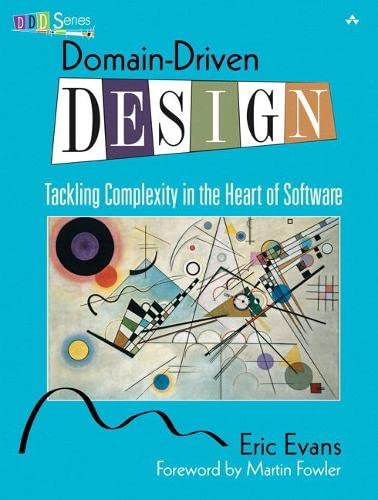
Author: Eric Evans
Publisher: Addison-Wesley
Latest Edition: 1st edition
Publication Year: 2003
Number of Pages: 560
Target Audience: Software developers, architects, and designers focused on complex domain modeling.
Switching your focus to “Domain-Driven Design: Tackling Complexity in the Heart of Software,” you’ll discover a revolutionary approach to managing project complexity and aligning teams around a shared understanding of the business domain. This guide breaks down technical jargon into digestible bits, making understanding and implementing domain-driven design in your projects more manageable.
Author Eric Evans doesn’t just tell you about domain-driven design; he shows you how to do it, using relatable examples from various fields. You’ll learn to model your domain, create rich, expressive domain models, and translate them into working software.
Read this book to delve into strategic design, which deals with large models and teams, and you’ll understand the patterns for integrating with other systems on your way to writing great software.
Key Benefits
- Understanding of domain-driven design principles
- Ability to align teams and manage project complexity
- Hands-on examples for practical knowledge
Pros
- Clear and concise writing style
- Comprehensive coverage of the topic
- In-depth examples for better understanding
Cons
- Requires some basic knowledge of software design
- Might be slightly tricky for beginners
- Some examples might seem abstract to a few readers
3. Code Complete: A Practical Handbook of Software Construction
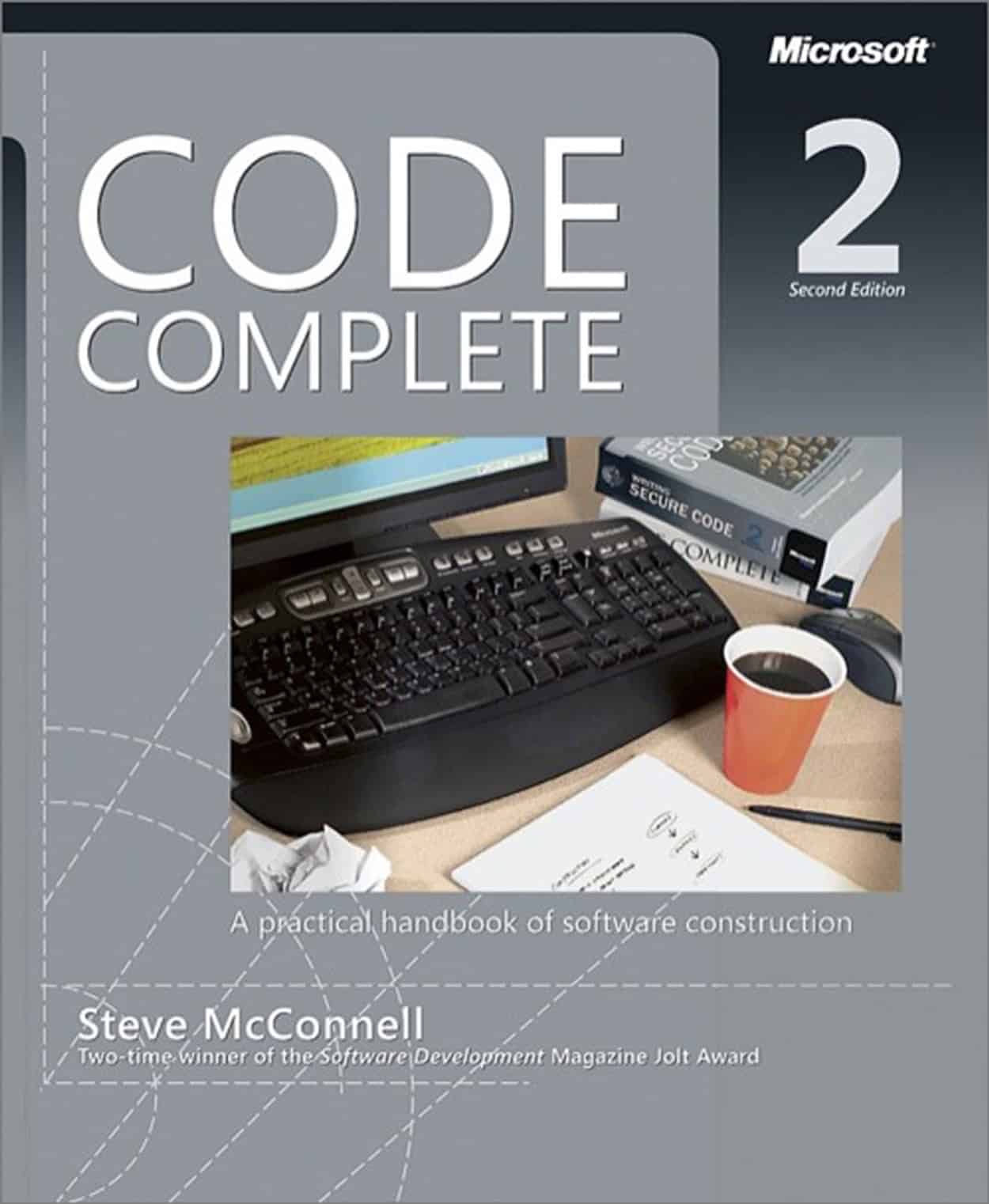
Author: Steve McConnell
Publisher: Microsoft Press
Latest Edition: 2nd edition
Publication Year: 2004
Number of Pages: 960
Target Audience: Software developers, both beginners and experienced, looking to enhance their code construction skills.
“Code Complete: A Practical Handbook of Software Construction” by Steve McConnell is a must-read. This comprehensive guide offers an extensive understanding of software development.
It goes beyond coding and focuses on crafting quality software. The book emphasizes design choices, coding style, algorithms, performance, and debugging. It teaches you how to prevent common mistakes, improve code efficiency, and effectively maintain your software. It’s like a bible for professional software developers and a stepping stone for beginners.
Key Benefits
- Gain an in-depth understanding of software development
- Learn tips and techniques to improve code quality
- Acquire strategies for effective debugging and maintenance
Pros
- Comprehensive and practical content
- Covers a wide range of software construction topics
- Useful for both beginners and experienced developers.
Cons
- A hefty read, spanning over 900 pages
- Some concepts may be outdated due to rapid technological changes
4. Clean Code: A Handbook of Agile Software Craftsmanship
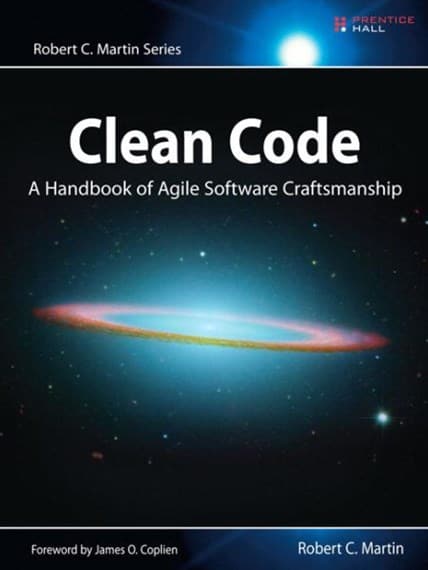
Authors: Robert C. Martin
Publisher: Prentice Hall
Latest Edition: 1st edition
Publication Year: 2008
Number of Pages: 464
Target Audience: Software developers interested in agile methodologies and writing cleaner, more maintainable code.
Robert C. Martin’s “Clean Code: A Handbook of Agile Software Craftsmanship” is a masterpiece you shouldn’t miss. This book takes you on a journey, teaching you how to write clean code – code that is not just functional but also easy to read, understand, and modify. It’s filled with practical examples, demonstrating the transformation of a bad code into a good one.
Martin’s book emphasizes the importance of keeping your code clean and its impact on a team’s productivity. Mastering the principles in this book will elevate your coding skills to a new level.
Key Benefits
- Improves understanding of code readability and maintainability
- Enhances coding efficiency
- Boosts team productivity
Pros
- Practical, real-world examples
- Comprehensive guide to coding best practices
- Written by a highly respected industry expert
Cons
- The book’s principles may not apply to all coding languages
- It may be challenging to implement some practices in a rigid corporate environment
5. The Clean Coder: A Code of Conduct for Professional Programmers
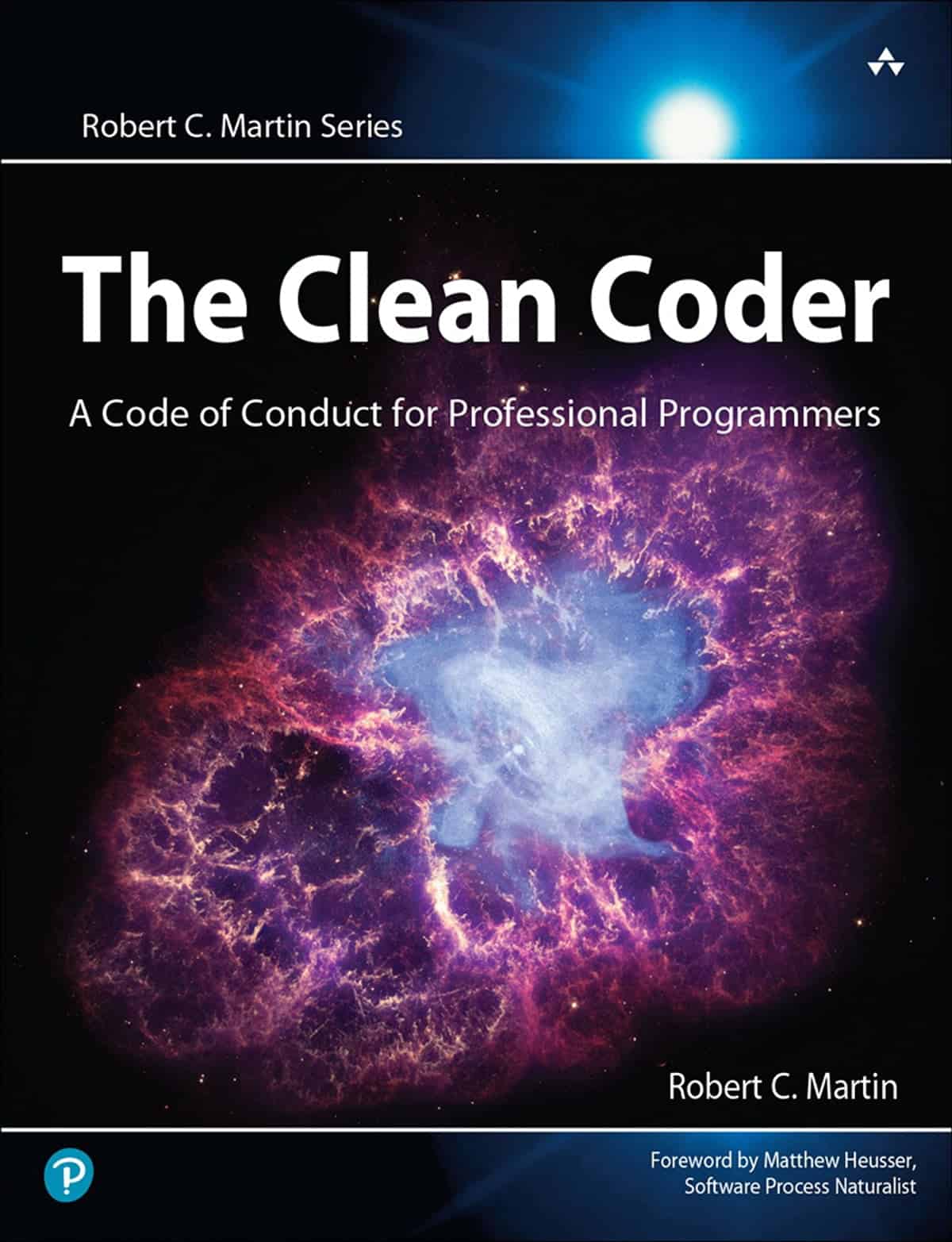
Authors: Robert C. Martin
Publisher: Prentice Hall
Latest Edition: 1st edition
Publication Year: 2011
Number of Pages: 256
Target Audience: Professional programmers looking to enhance their careers through better work habits and a professional approach to software development.
You’ll find an equally indispensable resource in Robert C. Martin’s “The Clean Coder: A Code of Conduct for Professional Programmers.” This guide is less about the mechanics of coding and more about the ethics and responsibilities of being a professional in the field.
This book is a beacon for all who aspire to master the art of programming while maintaining high professionalism. It delves into critical aspects such as time management, teamwork, problem-solving, and career development. Its practical advice, derived from real-world scenarios, emphasizes the significance of conducting oneself ethically and responsibly within the tech industry.
Key Benefits
- Enhances professional conduct
- Promotes ethical behavior
- Improves teamwork and problem-solving
Pros
- Insightful, real-world examples
- Comprehensive coverage of professional conduct
- Practical advice on career development
Cons
- Less emphasis on coding mechanics
- Requires a significant level of commitment
- Some concepts may be challenging for beginners
6. The Pragmatic Programmer: Your Journey to Mastery
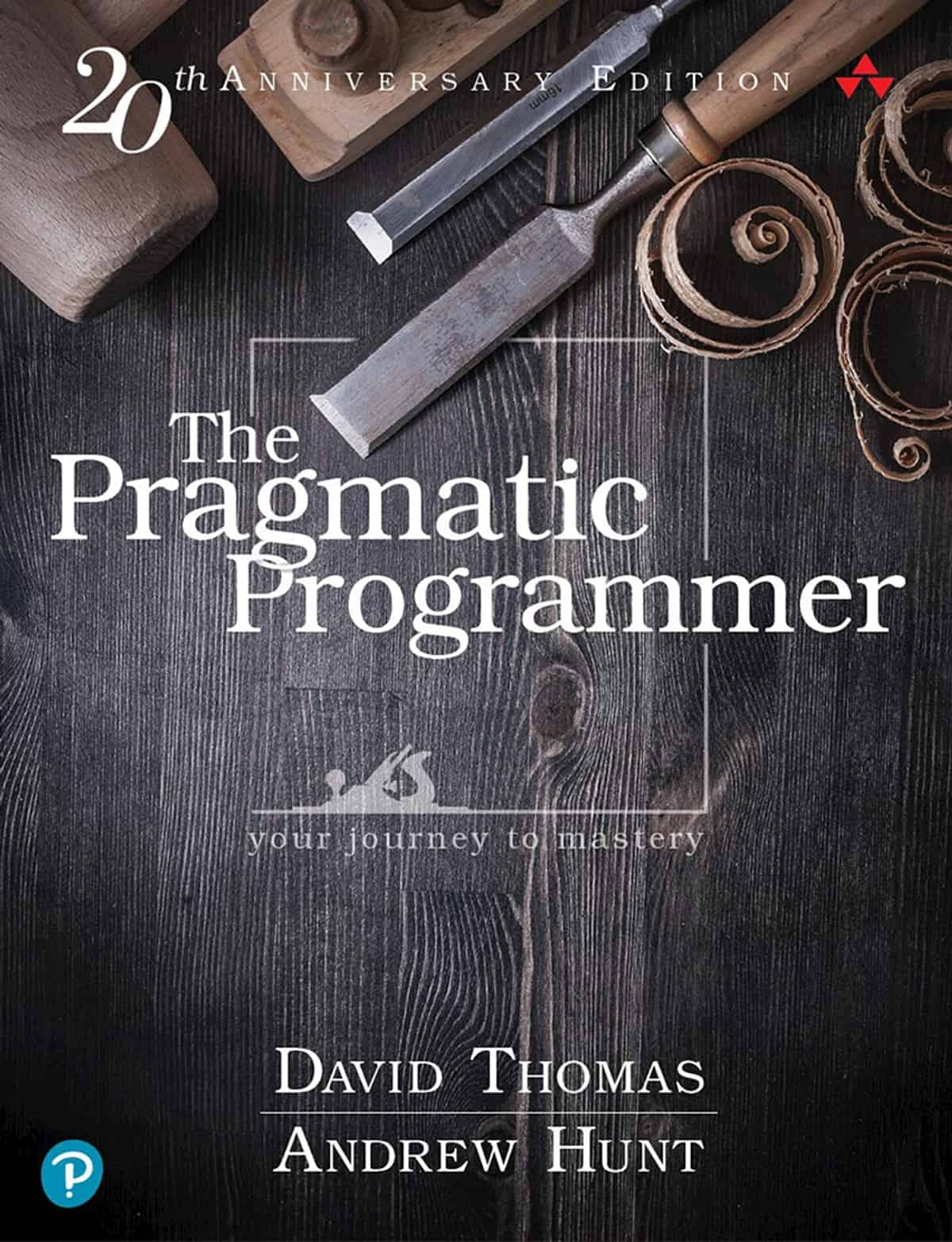
Authors: Andrew Hunt and David Thomas
Publisher: Addison-Wesley
Latest Edition: 2nd edition
Publication Year: 2019
Number of Pages: 352
Target Audience: Software developers, both novices and experienced, seeking to cultivate a pragmatic approach to programming.
Diving into “The Pragmatic Programmer: Your Journey to Mastery,” you’ll uncover a wealth of knowledge that’ll transform your approach to coding. This book guides you through the maze of complex programming concepts with clear, concise explanations and practical examples. You’ll learn to write more efficient code, consider edge cases, and effectively debug software.
By the end of this book, you’ll have enhanced problem-solving skills, a deeper understanding of algorithms, and a comprehensive view of software architecture. The key takeaway? Programming isn’t just about writing code – it’s about solving problems efficiently and in a maintainable way.
Key Benefits
- Enhances problem-solving skills
- Teaches efficient coding practices
- Gives a comprehensive view of software architecture
Pros
- Clear, concise explanations
- Practical, real-world examples
- In-depth coverage of complex programming concepts
Cons
- Some concepts may seem abstract without practical implementation
- Requires a significant time investment to benefit from its insights fully
7. The Mythical Man-Month: Essays on Software Engineering

Author: Frederick P. Brooks Jr.
Publisher: Addison-Wesley
Latest Edition: 2nd edition
Publication Year: 1995
Number of Pages: 336
Target Audience: Software engineers and project managers interested in the human aspects of software development.
“The Mythical Man-Month: Essays on Software Engineering” is a classic text offering valuable insights into project management and team dynamics. This book, penned by Fred Brooks, teaches software engineers essential concepts such as the fallacy of man-month, the second-system effect, and the law of diminishing returns in software engineering.
Brooks’ work challenges conventional wisdom, arguing that adding human resources to a late software project only makes it later. He emphasizes that communication overheads increase as the number of people increases, leading to inefficiencies.
Key Benefits
- Better understanding of project management
- Insights into team dynamics
- Practical software engineering principles
Pros
- Timeless advice and insights
- Clear and concise writing style
- Relevant for all levels of software development
Cons
- Some examples may seem outdated
- Theories might not apply to all project types
- Lacks focus on modern Agile methodologies
8. Patterns of Enterprise Application Architecture

Author: Martin Fowler
Publisher: Addison-Wesley
Latest Edition: 1st edition
Publication Year: 2002
Number of Pages: 560
Target Audience: Software developers and architects working on enterprise-level applications.
Moving onto “Patterns of Enterprise Application Architecture,” you’ll find a collection of blueprints for solving common software system design problems. This book will help you with a wealth of knowledge on enterprise application development. You’ll get to understand how to design and implement complex systems in a more manageable and comprehensible way.
In “Patterns of Enterprise Application Architecture,” you’ll delve into intricate types of software patterns like Model-View-Controller (MVC), Active Record, and Unit of Work. These patterns aren’t just theoretical constructs but are practical solutions for building software, distilled from years of developer experience.
Key Benefits
- Provides practical solutions to commonly encountered enterprise development problems
- Offers a comprehensive guide to the most valuable patterns in enterprise architecture
- Enhances your ability to design and implement complex systems
Pros
- Provides detailed, real-world examples
- Written by a respected authority in the field
- Acts as a reference guide for various design patterns
Cons
- Can be dense and complex for beginners
- Some patterns may be outdated due to technological advancements
- Requires a solid understanding of object-oriented programming and design principles
9. Refactoring: Improving the Design of Existing Code
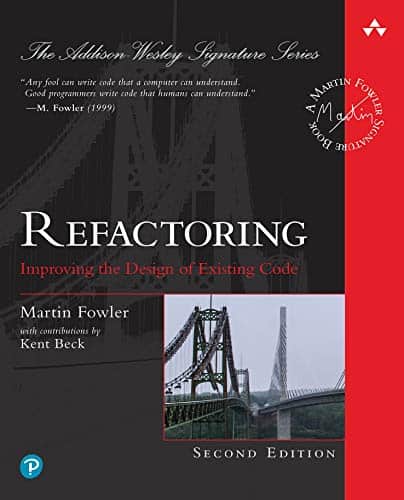
Author: Martin Fowler
Publisher: Addison-Wesley
Latest Edition: 2nd edition
Publication Year: 2018
Number of Pages: 448
Target Audience: Experienced programmers looking to improve and maintain the structure of existing codebases.
On to “Refactoring: Improving the Design of Existing Code,” one of the best books for software craftsmen. You’ll learn practical techniques to improve and optimize your existing codebase without changing its behavior. This book is a treasure trove of knowledge, offering in-depth insights into refining code to make it cleaner, more efficient, and easier to understand. It’s not about rewriting; it’s about enhancing and fine-tuning.
You’ll discover how to recognize “code smells” – those tell-tale signs of underlying problems – and how to apply the right “refactoring” to remedy them.
Key Benefits
- Enhances your ability to maintain and improve existing code
- Develop your skill in identifying problematic code
- Provides practical examples and solutions for common code issues
Pros
- A comprehensive guide to the art of refactoring
- Engaging and easy-to-understand content
- Offers actionable advice and techniques
Cons
- May be too advanced for beginners
- Requires time and practice to apply techniques fully
10. Working Effectively With Legacy Code
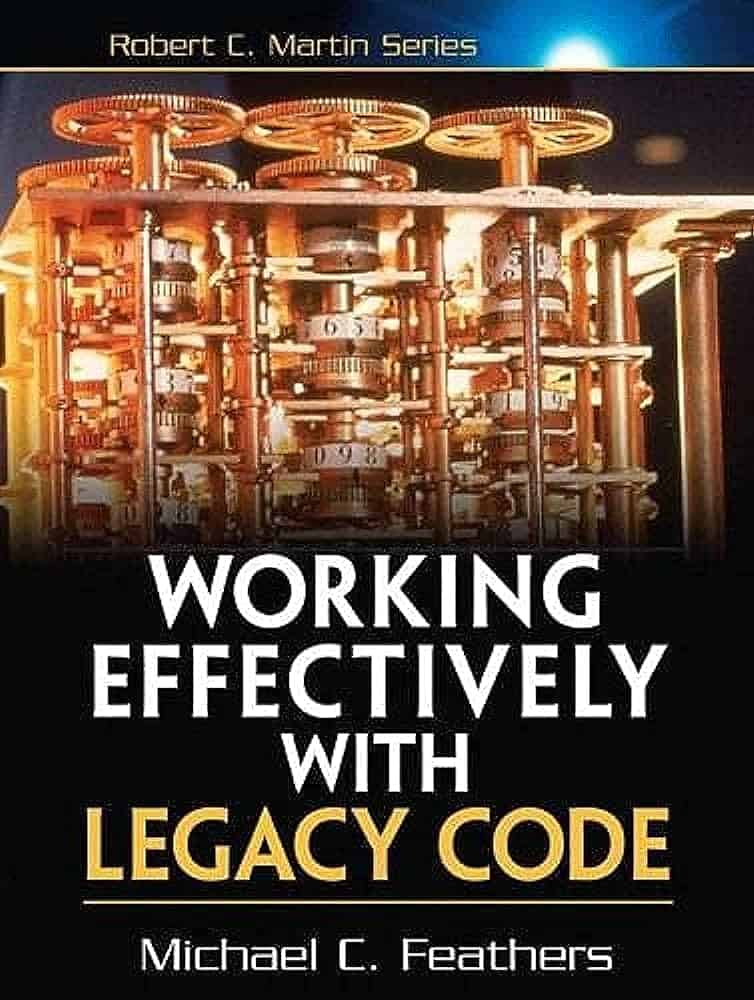
Authors: Michael Feathers
Publisher: Pearson
Latest Edition: 1st edition
Publication Year: 2004
Number of Pages: 464
Target Audience: Developers working on legacy systems seeking strategies for safely making changes and improvements.
You need to read “Working Effectively With Legacy Code” to uncover strategies for dealing with older, problematic code that isn’t easy to understand or change. You’ll learn the importance of identifying “seams” in the code and locations where you can alter behavior without modifying the code. You’ll also discover the “scratch refactoring” technique, allowing you to understand confusing code by rewriting it.
This book shows you how to write tests for legacy code, even when it seems impossible. You’ll grasp how to break dependencies in the code, making it less intertwined and easier to work with. You’ll appreciate the practical, real-world examples that help illustrate these techniques.
Key Benefits
- Learn to understand and modify confusing, complex code
- Gain strategies for writing tests for legacy code
- Discover techniques for breaking dependencies in code
Pros
- Practical, real-world examples
- Extensive technical knowledge provided
Cons
- Some methods may be too advanced for beginners
- Strategies may not apply to all coding languages
11. Code: The Hidden Language of Computer Hardware and Software
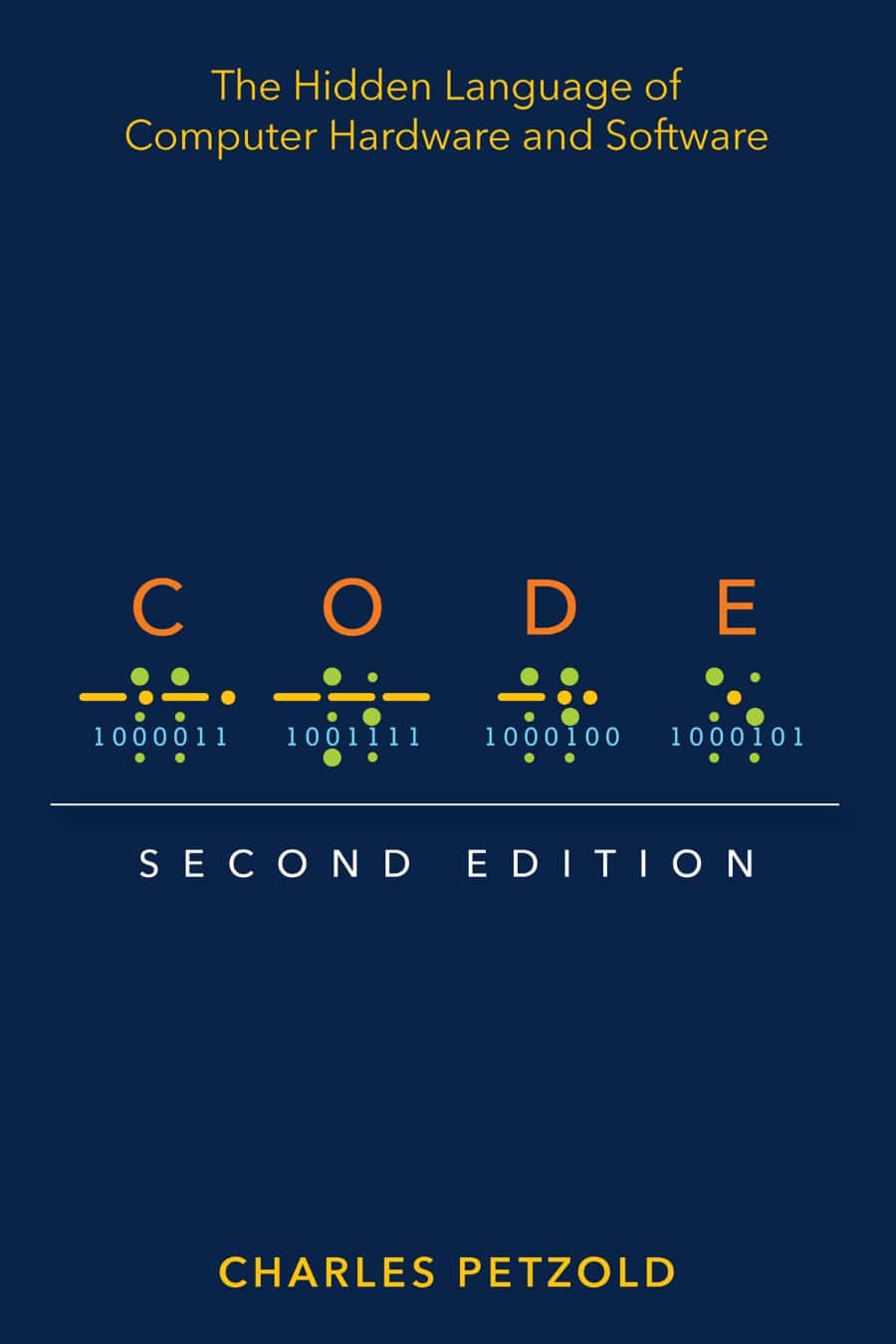
Author: Charles Petzold
Publisher: Microsoft Press
Latest Edition: 2nd edition
Publication Year: 2022
Number of Pages: 480
Target Audience: Anyone interested in understanding how computers work at a fundamental level, including non-programmers and beginners.
“Code: The Hidden Language of Computer Hardware and Software” is an intriguing exploration that’ll demystify the underlying principles of how computers work. This book is your guide, taking you on an enlightening journey. Here, you’ll learn the fundamental concepts of computer science. This book covers everything from binary code and logic gates to higher-level programming languages.
You’ll appreciate the author’s ability to make complex topics accessible. You may not be a tech guru, but after reading this, you’ll have a robust understanding of what makes your computer tick. This is one of the best books for beginners.
Key Benefits
- Comprehensive understanding of computer science basics
- Deeper appreciation for the complexity of computing devices
- Insightful knowledge that could boost your coding skills
Pros
- Detailed yet easy-to-understand explanations
- Breaks down complex topics into digestible parts
- Excellent for beginners and experts alike
Cons
- Might be too basic for seasoned programmers
- Some might find the pace slow
12. Continuous Delivery: Reliable Software Releases through Build, Test, and Deployment Automation

Authors: Jez Humble and David Farley
Publisher: Addison-Wesley
Latest Edition: 1st edition
Publication Year: 2010
Number of Pages: 512
Target Audience: Software engineers, managers, and architects looking to establish a robust software delivery process.
In “Continuous Delivery: Reliable Software Releases through Build, Test, and Deployment Automation,” you’re introduced to automating delivery processes to ensure reliable and consistent updates. The authors, Jez Humble and David Farley guide you through a transformative approach to software development, where you’re encouraged to automate the build, deployment, and testing processes.
Despite some repetition and outdated parts, the practical insights gained from this book are invaluable. It thoroughly explains the stages of the continuous delivery pipeline – commit, acceptance, capacity, manual, and production – and dives deep into advanced topics such as infrastructure management and version control.
Key Benefits
- Reduction in software delivery risk
- Increased efficiency in the development process
- Quick response to user needs
Pros
- Practical insights
- Detailed explanations
- Influential and essential in the field
Cons
- Some outdated parts
- Occasional repetition
13. Test-Driven Development: By Example
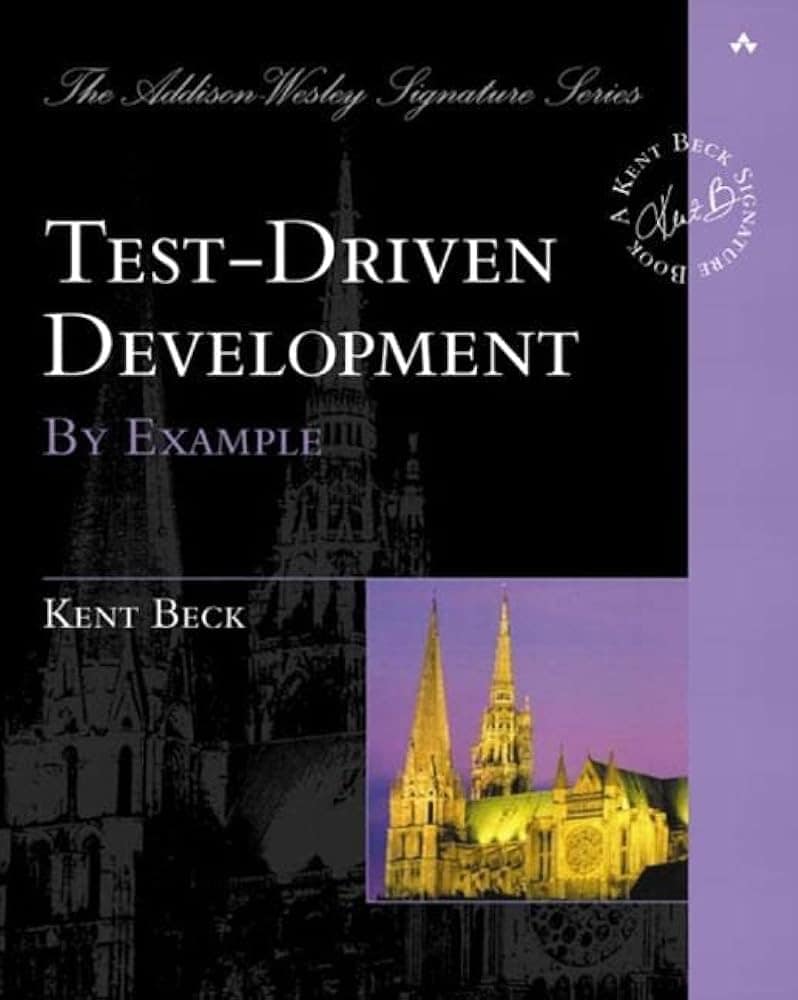
Author: Kent Beck
Publisher: Addison-Wesley
Latest Edition: 1st edition
Publication Year: 2002
Number of Pages: 240
Target Audience: Software engineers interested in learning the fundamentals and practical applications of test-driven development.
“Test-Driven Development: By Example” is a software development book showing how writing tests before code can transform your development process. This approach, known as Test-Driven Development (TDD), is a valuable technique for minimizing bugs, improving code quality, and speeding up the development cycle.
You’ll learn how to write tests that define what your code should do, then write the code to pass those tests – a radical shift from traditional coding practices. This practical guide gives you real-world examples that demonstrate the power of TDD and how it can be applied in different scenarios.
Key Benefits
- Minimizes bugs and improves code quality
- Speeds up the development cycle
- Promotes better understanding of the codebase
Pros
- Enhances code readability and maintenance
- Encourages simple designs and inspires confidence
Cons
- Requires a paradigm shift and disciplined approach
- Initial development can be slower
What Are Software Engineering Books?

Software engineering textbooks are critical resources designed to deepen your understanding and hone your skills in the ever-evolving field of software development. These books cover various topics, including programming languages, software design patterns, system architecture, project management, and DevOps practices.
Leveraging these resources, you can enrich your knowledge with industry best practices and foster innovation and efficiency in your projects. These texts can offer a rich knowledge base, allowing you to improve as a software engineer and upgrade your career.
Delving into such books can enhance your problem-solving skills, enabling you to approach complex challenges with a seasoned perspective. It’s a good practice to choose books that not only align with your current project requirements but also help broaden your overall understanding of the intricate world of software engineering.
How Can Software Engineering Books Benefit You?

You’ll find that a good read can significantly enhance your understanding and practical skills in this field. Software engineering books provide comprehensive knowledge that’s accessible even to non-techies. They break down complex concepts into digestible chunks, helping you understand the foundations of software development.
But how can books for software engineering benefit you? First, they offer a structured learning path. Instead of randomly searching for information online, these books systematically guide you through essential topics.
Second, the best books for software engineering provide real-world examples that make learning more practical and understandable. You’re not just absorbing theoretical knowledge but learning how to apply it.
Moreover, the benefits of reading software engineering books extend beyond immediate skill acquisition. They help you stay updated with the latest industry trends, methodologies, and best practices. This is crucial in a rapidly evolving field like software engineering.
Whether you’re a novice or a seasoned professional, the best books on software engineering can empower you with in-depth knowledge and a fresh perspective. So, pick up a book and start enriching your software engineering journey today.
Conclusion
I hope you’ve seen the value of software engineering and how its books can benefit you. These resources will not only boost your technical knowledge but also provide practical examples for real-world application.
Don’t hesitate to dive into these top software engineering books in 2023. They’ll equip you to stay ahead of the curve in this rapidly evolving field.
Remember, continuous learning is the key to success in software engineering. They are your gateway to upskilling yourself and advancing your career. What are you waiting for? Start reading your next book today.



